The surfaces in cyclocross racing can be dry and fast, or wet and slow depending on the time of year and weather.
Courses can include tree roots and rocks liable to cause pinch flats. Such days will call for a tyre with puncture protection and a sturdy tyre casing. Tyre pressure will need to be relatively high.
But in sloppy December mud, traction and not puncturing will be your uttermost concern. You’ll want a tyre you can run as low as possible to stay upright on descents and through bends.
Here, we talk through how to choose the right cyclocross tyre for every condition and how to ensure that tyre is at the right pressure for you.
What is a cyclocross tyre?
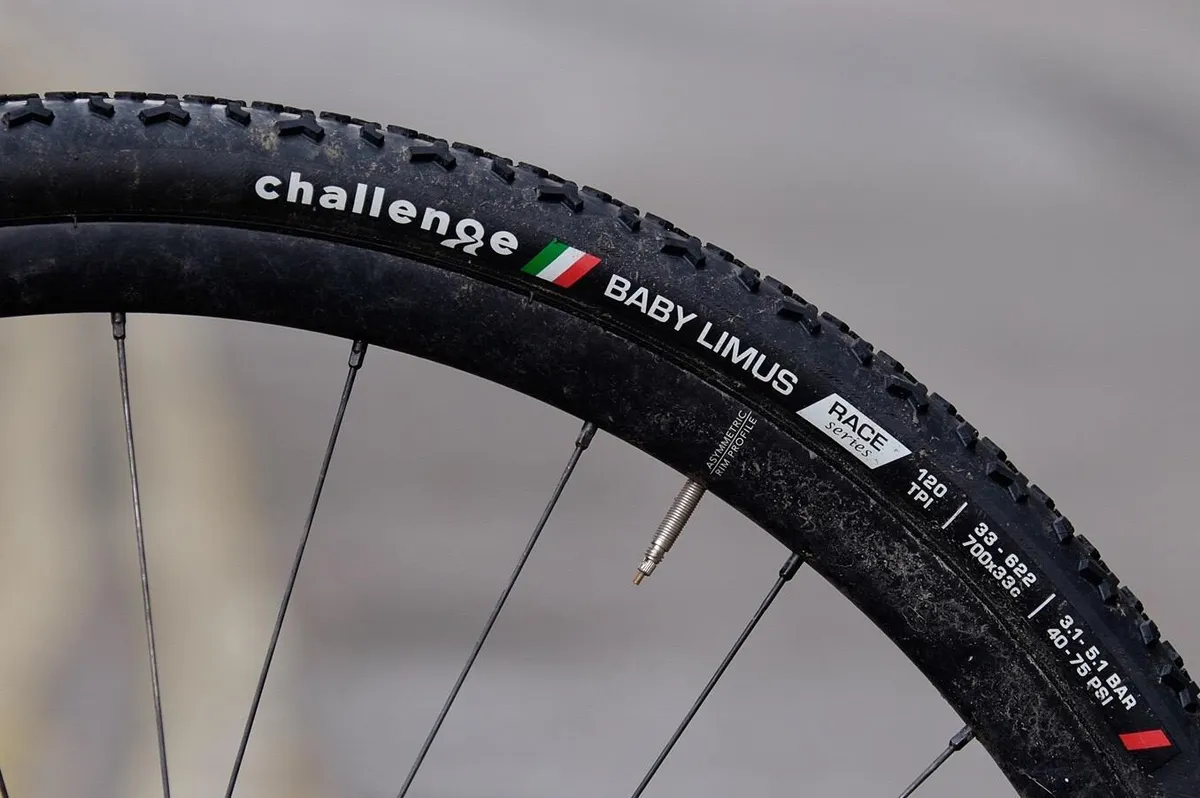
A cyclocross tyre looks like a slightly wider and knobbly road tyre.
The maximum permitted width in UCI-sanctioned cyclocross races is 33mm. In UK regional races, you can run 35mm or 38mm.
A CX tyre is a bit of a hybrid, meeting some of the demands of on- and off-road riding.
The slickest treads resemble something the pros might use in the cobbled classics, while the grippiest are more akin to mountain bike tyres.
How to choose the right cyclocross tyres for every condition
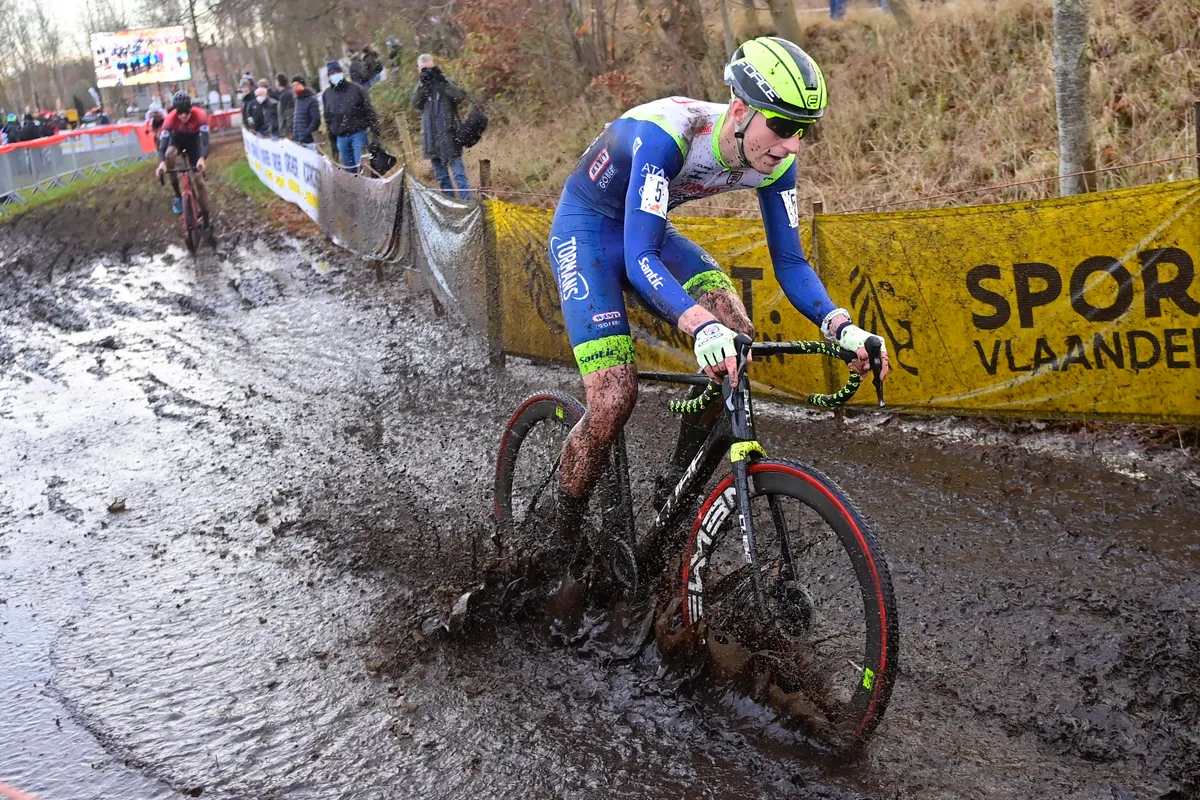
There are a plethora of cyclocross tyre types to suit the range of surfaces you’ll encounter.
The potential of the best cyclocross bikes will be wasted if they’re shod with the wrong tyres.
Semi-slick rubber might be fantastic on firm grass in September. But by the middle of winter, unless you’re a cyclocross skills maestro, you’ll spend a lot of time on the deck.
What is more, the aggressive, knobbly tread of a mud tyre will slow you down in fast conditions.
Starting out, you can afford to settle for an all-round tyre, but as you become more serious you might consider a dry and wet option too.
Cyclocross tyres fall into three main categories.
Mud tyres

- Characteristics: the quintessential CX tyre, for UK conditions at least, features deep, aggressive knobs, possibly higher on the shoulder
- When to use it: most of the UK season, except when the grass is still green
- Examples: Vittoria Terreno Wet, Michelin Power Mud, Challenge Limus
File tread
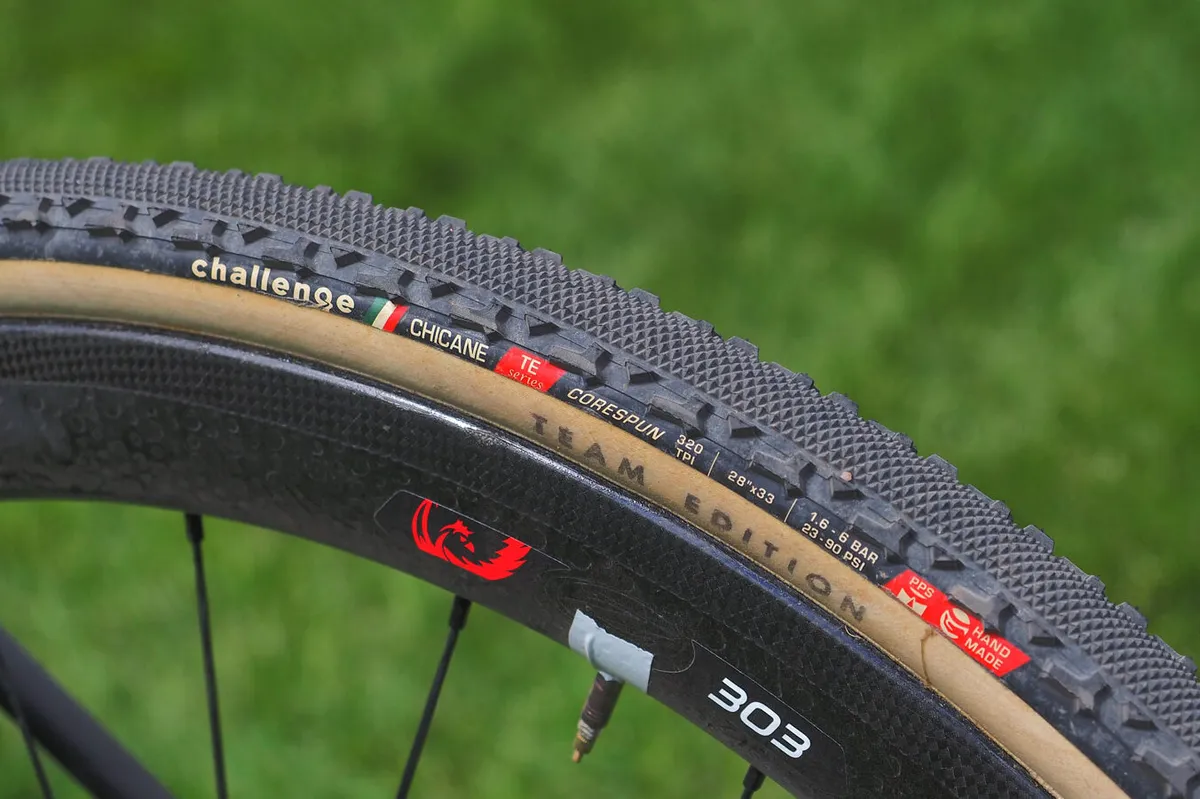
- Characteristics: fine tread runs down the middle and there may be raised knobs on the sides
- When to use it: hard, fast dirt or on dry grass
- Example: Challenge Chicane, Specialized Tracer, Vittoria Terreno Dry
All-round
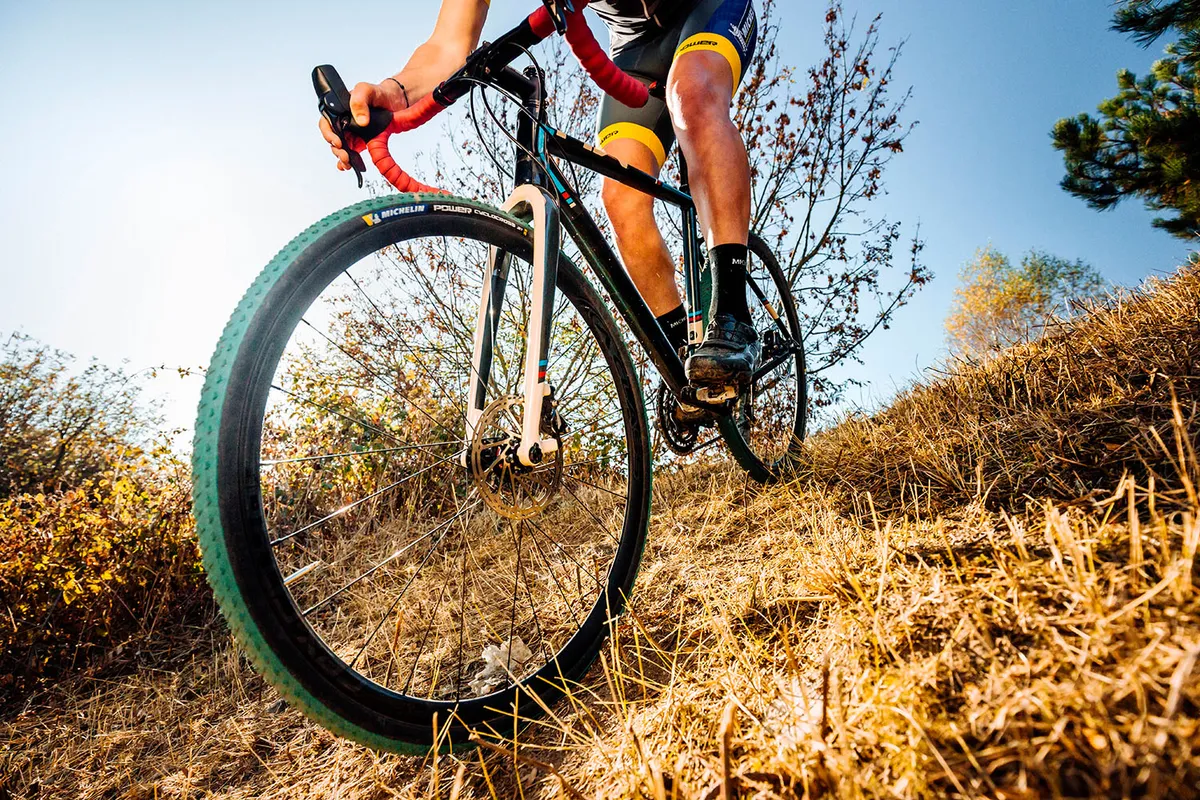
- Characteristics: small knobs provide grip, but lugs aren’t large enough to add excessive rolling resistance
- When to use it: in lighter mud and when drier sections of the course require speed
- Example: Michelin Power Jet, Schwalbe X-One
Tubular, tubeless or clincher – what's the best option for CX racing??
The presence of all three types of tyre at cyclocross races reflects their strengths and weaknesses, and individual rider preferences.
Tubular
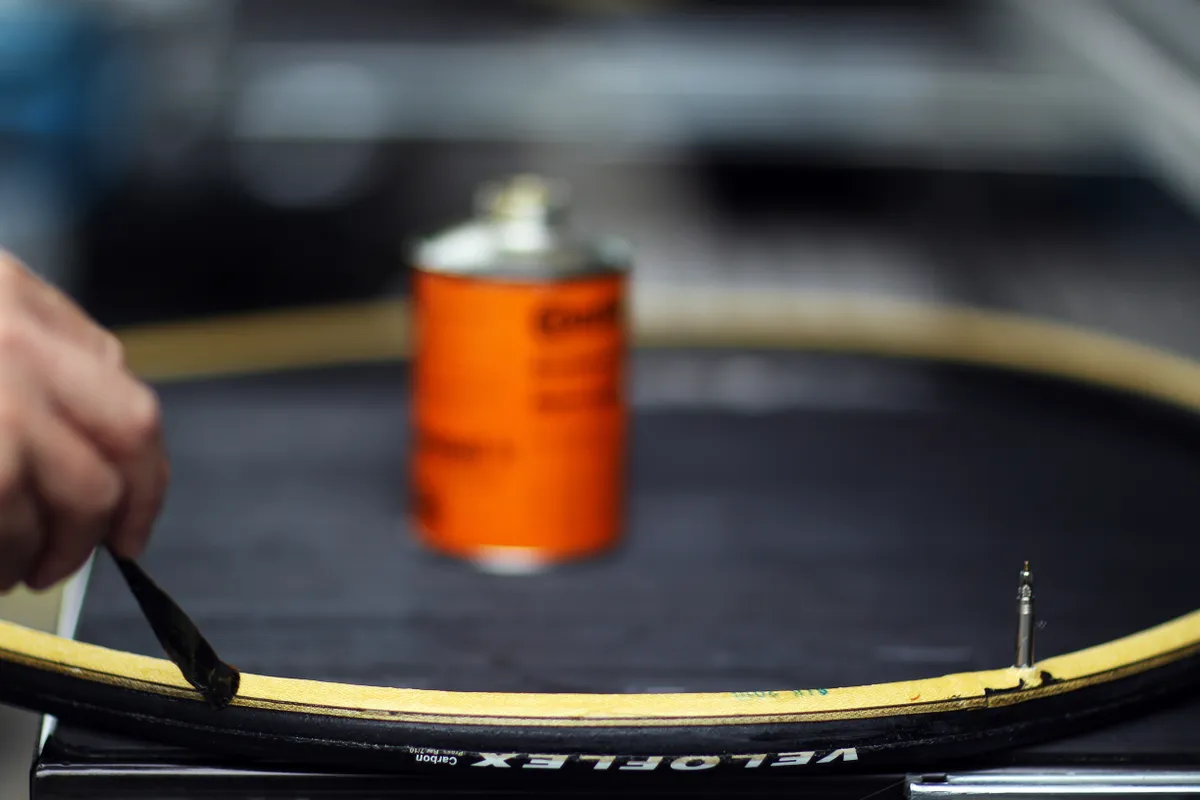
Despite going out of fashion on the road, tubular tyres are favoured by a surprising number of CX racers. They can be run at a low PSI and, unlike tubeless tyres, cannot burp (though you can still roll a poorly glued tyre right off of a rim).
With a tubular tyre, an inner tube is sewn into a fabric casing and stuck onto a tubular-specific rim.
They are lighter and thought to roll faster than clinchers, but their fragility, price and time-consuming maintenance is losing them favour.
Tubeless
The case for tubeless tyres on the road remains up for debate. However, the argument for tubeless cyclocross tyres is strong.
Manufacturers say tubeless tyres present lower rolling resistance. Any punctures during the race should seal up themselves thanks to the sealant.
The absence of tubes removes the risk of pinch flats, permitting a lower PSI to maintain grip in the slipperiest conditions.
Clincher
A good overall choice for cyclocross, clinchers contain an inner tube within a tyre.
They’re cheap and their ease of use makes it simple to switch between tyres to suit the day’s conditions.
In soft conditions, they can be run at low enough PSI to grip in the mud. However, the risk of a pinch flat increases when going over hard objects, such as tree roots and rocks.
How to find the perfect cyclocross tyre pressure
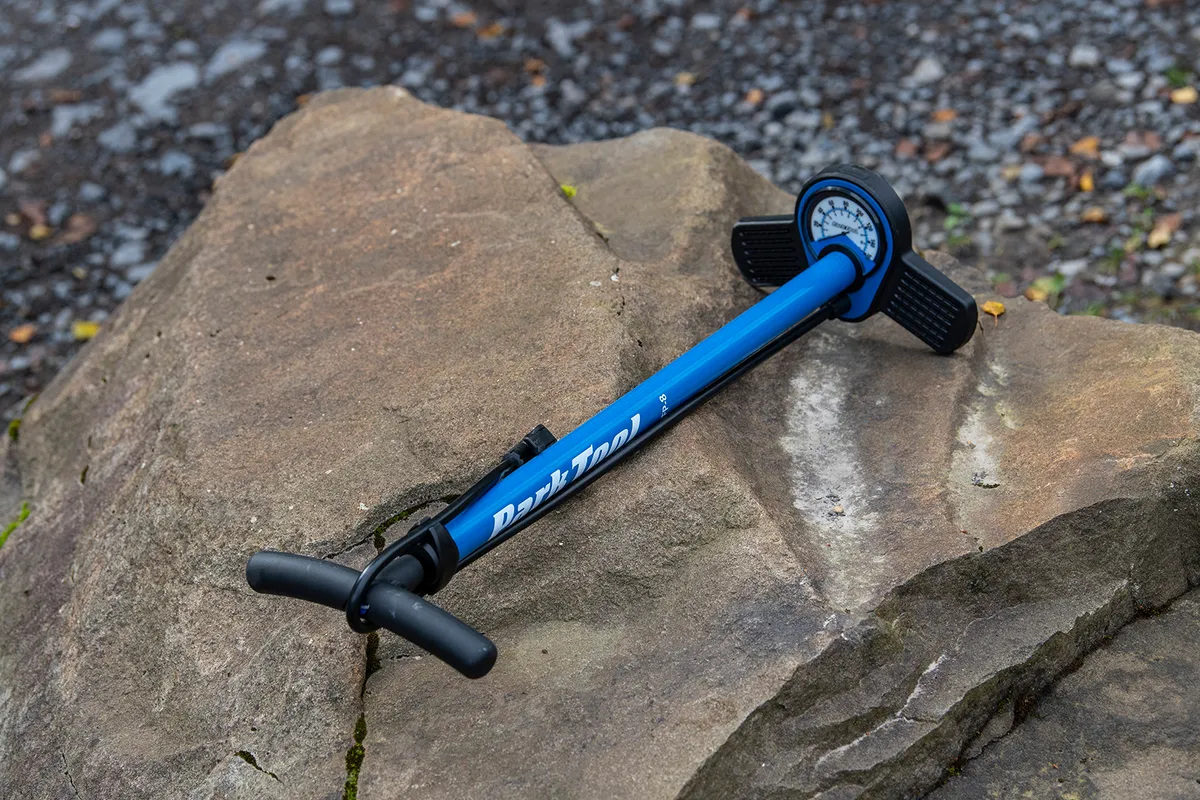
Dialling in the ideal tyre pressure for the day requires trial and error, both in training and on race day.
When it’s anything but dry, the most experienced racers will go as low as they can go.
The key thing you want to avoid is bottoming out the rim, which is when an under-inflated tyre causes the outside of the wheel to hit into the ground, possibly leading to a puncture.
In training, if you find yourself getting jolted about or struggling for grip in bends, let out some air.
If you’re running clinchers and suffering pinch flats, you’ll need to pump them up.
On race day, if you're running 33mm tyres, in average conditions, inflate to 30-35psi to kick things off. See how this feels on the practice laps and adjust if needed.
On a really muddy course, clinchers can be run as low as 20psi with little risk of puncturing. Tubeless tyres can be let down to 15psi in the same conditions.
A rider’s tyre pressure will vary according to differences in skill, speed, weight and tyre tread pattern.

The best 'cross racers handle their bikes so deftly the pressure can be lower, while heavier riders need to pump up their tyres more.
The old-school method of squeezing the tyres to assess their inflation suffices for some.
But a digital pressure gauge is more precise, and take a track pump to your race to make inflating and deflating your tyres easier.

